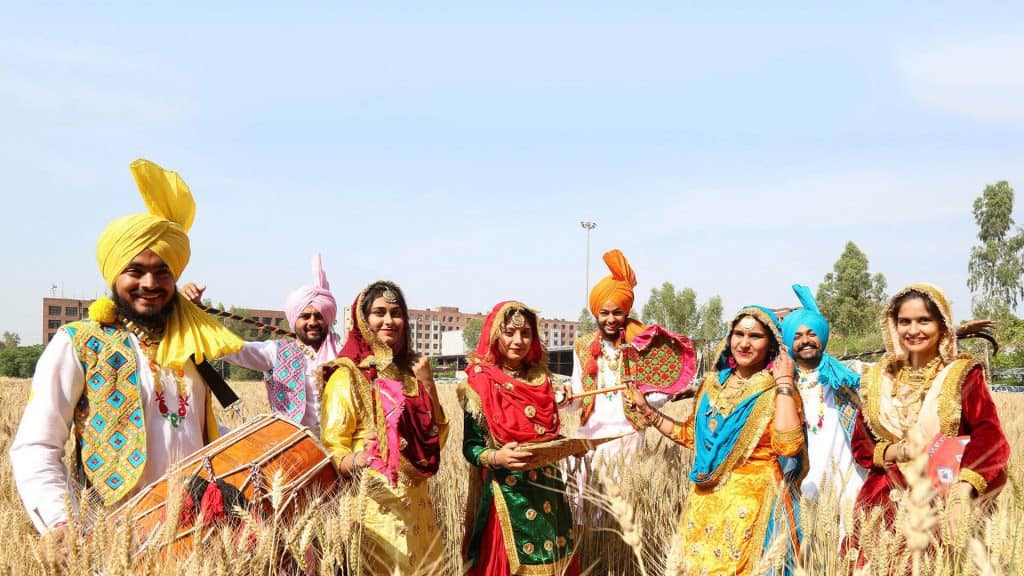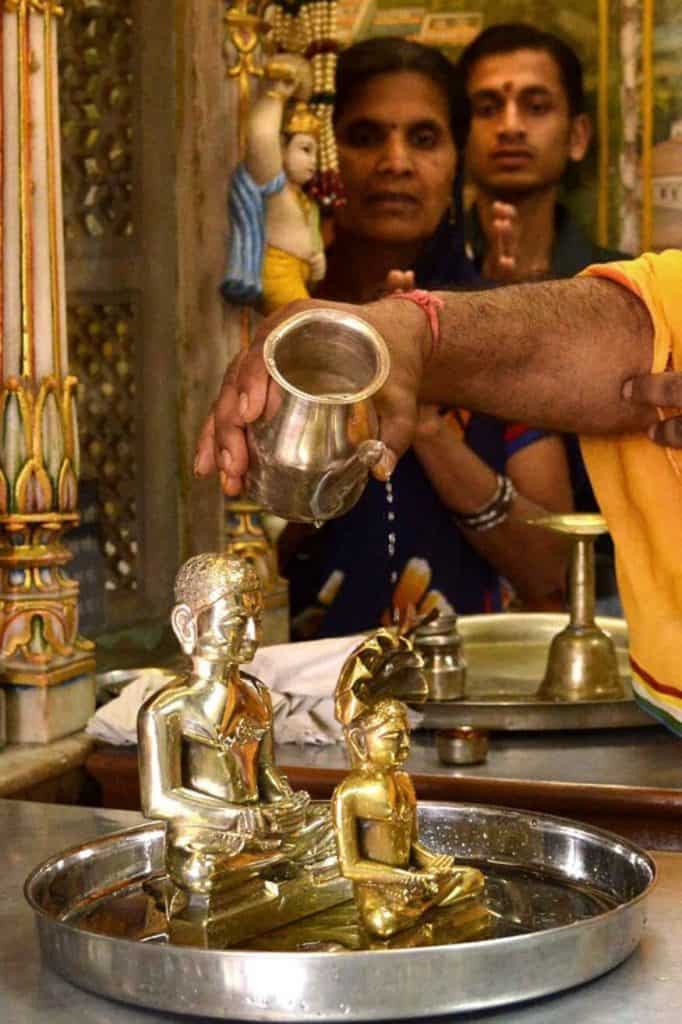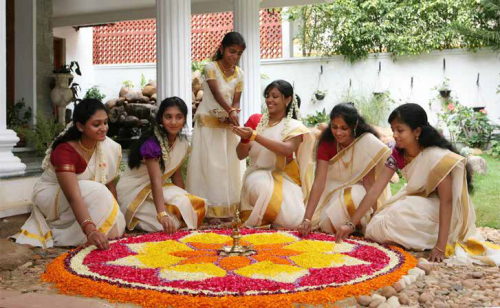Festivals in April in India create a great cultural tapestry of joy, bringing in a celebration of spring’s renewal and the rich diversity of the human spirit.

India is an incredible travel destination, offering a perpetual festivity with its myriad festivals and fairs. From stunning natural landscapes to rich cultural heritage, this nation has it all. The vibrant fairs and festivals celebrated in April significantly contribute to India’s tourism, inviting you to immerse in its splendid culture.
These events, celebrated with immense zeal and vibrancy, showcase India’s diverse culture and traditions through festivities like Baisakhi, Mahavir Jayanti, Buddha Purnima, and many others.
Each festival sees enthusiastic participation from various communities, highlighting the equal importance they hold across different groups. April in India is marked by a plethora of colourful festivals, each presenting a unique glimpse into the country’s rich cultural fabric and rituals.
Here is a list of the Festivals which are celebrated in April:
Baisakhi
Baisakhi, celebrated with grandeur in Amritsar, Punjab, is a festival that ushers in April with vibrant traditions and cultural festivities. It is a day that marks the commencement of the Nanakshahi calendar, aligning with the start of Baisakh, the season for harvesting the Rabi crops.
This festival, deeply rooted in agricultural practices, also carries astronomical significance as it coincides with the sun’s transition into Mesh Rashi. Recognized widely on the 13th or 14th of April across Punjab and Haryana, Baisakhi is not just a harvest festival; it holds profound spiritual and historical importance, especially for the Sikh community.
Farmers celebrate the fruits of their labour with enthusiasm, while the broader community engages in a spiritual homage, dressing in colourful attire and offering prayers in Gurudwaras. The streets come alive with cultural performances, depicting the rich heritage and communal spirit of the region.
For Sikhs, Baisakhi is a time of dual celebration. It not only commemorates the successful harvest but also marks significant milestones in Sikh history. The festival is replete with kirtans, visits to local Gurudwaras, community fairs, and nagar kirtan processions.
It is during this time that the Khalsa order was established by Guru Gobind Singh, the tenth Sikh Guru, on April 13, 1699, laying the foundation for a collective Sikh identity.
Additionally, the coronation of Maharaja Ranjit Singh on April 12, 1801, to coincide with Baisakhi, symbolized the unification and strength of the Sikh Empire. Baisakhi thus encapsulates a blend of cultural joy, agricultural celebration, and religious fervour, making it a cornerstone of Indian and specifically Sikh traditions.
Bihu, Assam
Bihu stands at the heart of Assam’s cultural and festive life, celebrated with unmatched vibrancy and enthusiasm throughout the state. This festival trio—Bohag Bihu in April, Magh Bihu in January, and Kati Bihu in October—each holds a unique place in the Assamese calendar, embodying distinct traditions and significances that together paint a full picture of Assamese life and seasonal cycles.
Particularly notable is the Bohag Bihu, or Rongali Bihu, which signals the arrival of spring and the Assamese New Year, filling the air with joy and celebration. The festivities commence with Goru Bihu, dedicated to the welfare of livestock.
On this day, cows and bulls are treated with utmost care, bathed in turmeric water, and fed well, symbolizing respect and gratitude towards these animals for their role in agriculture.
Following Goru Bihu is Manuh Bihu, the day that marks the start of the New Year, where the emphasis shifts to human connections and community. People don new attire, homes bustle with the preparation of festive meals, and Pithas—traditional Assamese delicacies—is a must-have.
It’s a day of widespread joy, where visiting loved ones, exchanging gifts, and distributing the ‘Gamucha’, a traditional Assamese towel, as a mark of respect, are central traditions. Through these practices, Bihu not only celebrates the agrarian roots and seasonal shifts of Assam but also reinforces social bonds and communal harmony.
Mahavir Jayanti
Mahavir Jayanti is a highly revered festival among the Jain community, commemorating the birth of Lord Mahavira, the 24th and final Tirthankara, or spiritual teacher, in Jainism. This festival underscores Jainism’s core values, emphasizing world peace, harmony, and a lifestyle that minimizes harm to all living beings.

Lord Mahavira’s teachings focused on principles such as non-violence, truthfulness, abstaining from theft, maintaining chastity, and practising non-attachment. He advocated for the sanctity of all life, promoting kindness, compassion, and respect towards every soul. His teachings also highlighted the importance of leading a simple, peaceful life grounded in virtue.
Celebrated with immense joy and devotion by Jains worldwide, Mahavir Jayanti sees a variety of religious activities. Devotees participate in processions, visit temples to offer prayers, engage in acts of charity, meditate, and sing hymns in honour of Lord Mahavira. This day serves as a reminder of the path of righteousness and the significant impact of living a life that cherishes and respects all forms of life.
Ram Navami
Ram Navami is a significant Hindu festival that commemorates the birth of Lord Rama, an embodiment of virtue and an avatar of Lord Vishnu. Celebrated with immense devotion and enthusiasm, Ram Navami not only marks the culmination of the nine-day Chaitra Navratri festivities but also symbolizes the triumph of good over evil.
This joyous occasion is observed with great reverence both in India and by Hindus around the globe, making it a unifying event across different cultures.
The festival is characterized by vibrant celebrations, spiritual activities, and the practice of fasting. Devotees undertake fasts on this day, believing that such devotion brings them infinite joy, prosperity, and blessings from Lord Rama. Temples are filled with worshippers who engage in prayers, chant mantras, and listen to epic tales recounting Lord Rama’s deeds.
Significant pilgrimages like Ujjain, Ayodhya, and Rameshwaram witness grand festivities, attracting thousands of pilgrims who gather to perform sacred rituals and honour Lord Rama’s virtuous life. Ram Navami thus offers a profound experience of spiritual renewal and communal harmony, inviting all to partake in the celebrations of one of Hinduism’s most cherished festivals.
Pooram- Kerala
In Kerala, life is beautifully intertwined with the rhythm of annual festivals that honour the village deities, celebrating the bounty of the harvest season. These festivals offer a delightful pause from the daily grind, ranging from intimate gatherings to the grand spectacle known as Thrissur Pooram.
While there are several Pooram festivals celebrated throughout central Kerala, each with its unique charm, Thrissur Pooram stands out for its unparalleled beauty and grandeur, earning the title of the “Mother of all Poorams.”
Thrissur Pooram is not just any temple festival; it is a cultural phenomenon that showcases the essence of Kerala’s festival traditions on a magnificent scale. Celebrated during the Malayalam month of Medom (April-May), this festival brings together a majestic assembly of Gods and Goddesses from the surrounding regions to the Vadakumnathan Temple.
The deities, mounted on splendidly caparisoned elephants and accompanied by the vibrant sounds of Chenda melam and pancha vadyam, create an awe-inspiring spectacle.
The festival features ten principal participants, including deities from Thiruvambady Bhagavathi to Kanimangalam Sastha, each following a meticulously planned schedule to keep the 36-hour festivities energetic and uninterrupted.
The Thrissur Pooram is a testament to Kerala’s rich cultural heritage, offering a spellbinding experience of community, devotion, and celebration that captivates both locals and visitors alike.

Nenmara Vallanghy Vela
The Nenmara Vallanghy Vela, also known simply as Nenmara Vela, stands as one of Kerala’s most vibrant annual festivals. It is celebrated with great fervour at the Nellikulangara Bhagavathy temple located in Nenmara, within the scenic Palakkad district.
Nestled between the neighbouring villages of Nemmara and Vallanghy, in the lush valley beneath the Nelliyampathi hills, this festival transforms the verdant paddy fields into a bustling festival ground in early April.
The celebration, which marks the end of the paddy harvest season, is renowned for its grand display of fireworks, elaborately decorated elephants, and a wide array of cultural performances, including Panchavadyam and Pandi Melam, showcasing some of Kerala’s finest artists.
Villages construct magnificent structures, or ‘anapanthal’, adorned with bamboo, wood, and twinkling lights, adding to the festival’s allure. The highlight of the event is the majestic elephant procession to the Nellikulangara temple, a meeting of the divine and the devout.
The fireworks display, known for its intensity, has earned a reputation as one of the loudest in Asia, and perhaps globally. The festival not only serves as a spiritual gathering but also ignites a friendly rivalry between the villages of Vallanghy and Nemmara, adding to the communal spirit.
Attracting visitors from across states and abroad, the Nenmara Vallanghy Vela is a mesmerizing blend of colour, art, music, and communal joy, celebrating the cultural heritage of Kerala in all its glory.
As these celebrations bring communities together in a burst of colour and spirituality, they not only enrich the cultural landscape but also beckon travellers worldwide to partake in India’s rich heritage. This month of festivity is a testament to the enduring spirit and unity of its people, making India a truly enchanting springtime destination.
Read more: Latest



